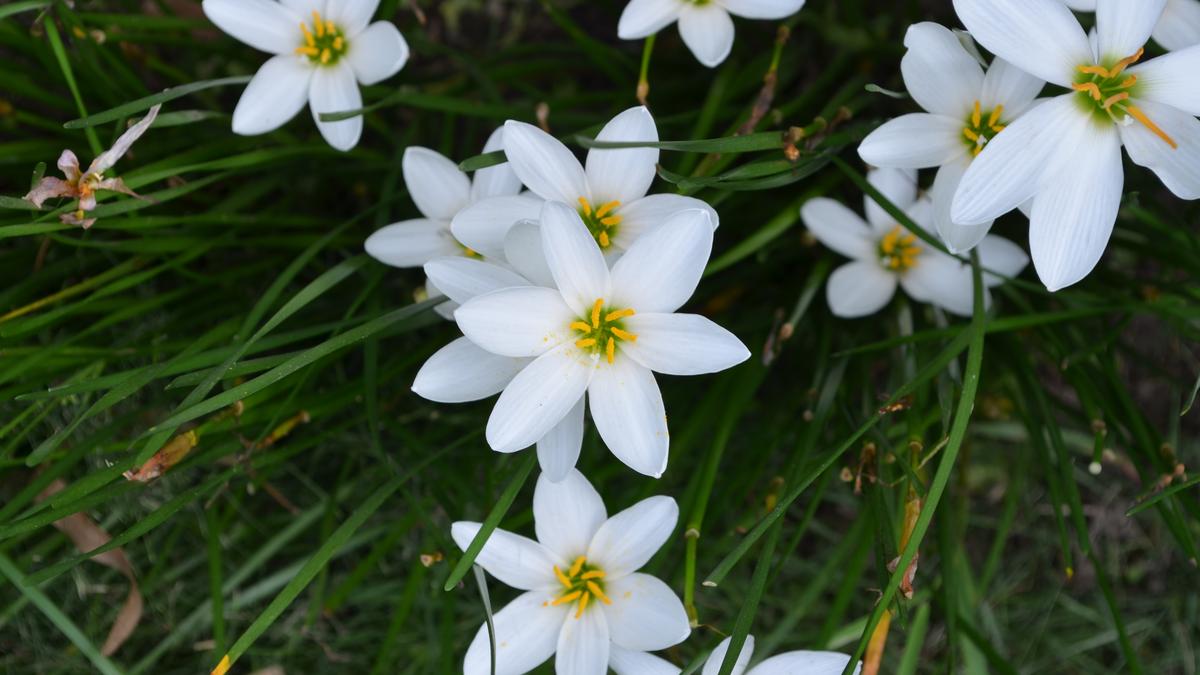T he plants at our home never fail to amaze me. They can lie dormant for the longest time and then one fine day, change like magic. My rain lily plant did not flower for the past two years with only a bouquet of long and green ribbon-like leaves growing from it.
On the first morning of July, I woke up to a single white flower adorning its fresh green foliage with two buds surrounding it. A pristine and beautiful bloom with petals like the feathers of a swan. As a proud plant parent, I stood there gazing at it fondly, touching its soft petals, as the yellow pollen from its stamen sprinkled on my fingertips.

It was the first flower of the monsoon. I was pleasantly surprised. More so, as after a fertile spring, many of my plants breathed their last in the scorching summer.
It was painful to see them drying and drooping, changing colours from green to yellow to brown and then black as they embraced the brown damp soil of their pots. In the blink of an eye, my balcony turned from a plant paradise to a cemetery of plants and fallen blossoms. Needless to say, every time I stood on my balcony this summer, my mood resembled the state of my little garden, that of solemn despondence.
William Wordsworth’s “sprightly maiden”, the common daisy, a shy and lowly plant that I religiously sow every spring, meets a similar fate every season. I collect the seeds from my plants to sow them in the next season with a hope of regrowing new plantlets. Sometimes the seeds sprout, sometimes they don’t and when they do you are again forced to witness a cycle of growth and death as you parent them like a baby.
It is mildly heartache inducing. A solemn reminder of my own mortality. Nature’s way of telling us to find comfort in uncertainty and to brace ourselves for constant change.
Whenever I place my young hands alongside a young leaf of a plant I see a similar fresh sheen on both their surfaces. This smooth shine gradually gives way to wrinkled dullness. Plant and human age alike, from the bountiful spring to desolate autumn.
For the past two years, with a faint hope but a sense of duty, I continued to care for the rain lily plant, by pruning dead leaves, adding organic manure and watering it regularly. The plant still thrived sans the flower until this blessed July morning. We should endeavour to stay in tune with nature’s cycles and seasons as they teach us the lesson of patient waiting with a sprinkle of magic.
Good things take time and that delay is not denial. We learn to savour the simmering slow burn of our actions towards our goals. Everything and everyone has their own timeline and journey which should be respected just as every plant has its seasons of growth, death and rebirth.
James Clear writes in his bestseller Atomic Habits, “Bamboo can barely be seen for the first five years as it builds extensive root systems underground before exploding 90 feet into the air within six weeks.” It consoles us with the idea that it may seem nothing is happening despite our efforts until everything happens all at once and we feel a sense of happy disbelief. Nothing may be visible over the ground, but underground our sincere efforts and actions are adding up, drop by drop, compounding towards a wonderful change.
Unlike the rain lily, I had expected my periwinkle plant, also known as sadabahar (literally translated as the “evergreen flower”) to flower luxuriantly as it did for the past two years. However, to my dismay, yellow-brown spots appeared on its leaves and the plant dessicated to its death. Things may not go as you expect.
It hurts but acceptance is the only way out. This disappointment reminds me of another instance when I purchased an exotic ornamental plant from the Delhi University annual flower show this year, convinced of the ceaseless assurances from the florist that it was a perennial plant. I followed all instructions for its care to the T only to see it die within a month despite a scrupulous tending routine.
It’s difficult to assuage oneself in such a situation when our hard work yields a fruit named zilch. It tastes sour and bitter leaving an aftertaste of hopelessness. That’s when we need to hold on to hope.
The white rain lily grew from the green foliage as a harbinger of monsoon. The recent rain drenched the parched earth at a time when major parts of India were reeling under an unprecedented heat wave due to the unforgiving hot summer sun. This caused many unfortunate deaths.
The rains infused life and vitality in everything around restoring the balance in the weather. It often gets the hottest before it rains to soothe our senses. The sight of raindrops rolling over the petals of a rain lily makes you appreciate nature’s art of maintaining balance and harmony in a world which is constantly threatened by dangerous human ignorance.
It is almost surreal how a humble rain lily is capable of teaching great lessons to mankind only if you are willing to listen. [email protected] Copy link Email Facebook Twitter Telegram LinkedIn WhatsApp Reddit.



















